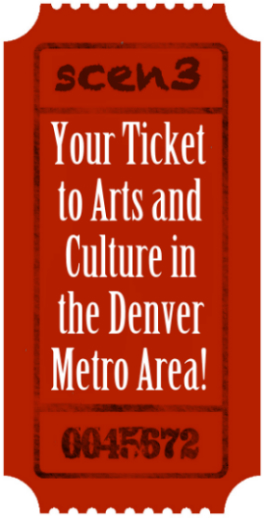Celebrating Music of the Reformation: Seicento Baroque
A preview by Barbara Hamilton
A 33-year old man emerged from the shadows, paper in hand. His hands shaking, he nailed the manuscript with 95 theses on the door of the Wittenberg church. Martin Luther’s revolutionary acts of insubordination and protest against the Catholic Church had just begun.
All over the world, choral groups are celebrating the 500th anniversary of Martin Luther’s fiery declaration in October 1517, which we now call the Reformation.
Seicento Baroque Ensemble offers their unique celebration of 500 years of the Reformation, and will follow the thread of the Lutheran Protestant chorale, from Luther’s era all the way through the time of Johann Sebastian Bach.
Luther, longing for music and texts to be rendered in German in church services, pinned his famous theses to the church door on October 31st, 1517. The vocal world has never been the same.
Martin Luther’s Protestant chorale tradition can be traced directly over 500 years back to Luther’s changes to the liturgy.
Luther, himself an accomplished musician and Augustinian monk, argued that songs and chants should no longer be sung in Latin or Greek, but in the language of the people, through the common hymn. This was a direct challenge to the traditions of the existing Church.
No need for translation during a church service, then- words and ideas would be easily accessible to all congregants, in the vernacular. (The use of the vernacular in Lutheran church services in Germany, easily transferred over to English-speaking Lutheran congregations, who now also sing in English.)
Luther also felt strongly that, through hymns, a congregation singing together would have a community approach to confession, rather than a one-on-one confession with a priest.
Seicento Baroque (Say-CHEHN-toe) is entering 2017 with a new Artistic Director and conductor: Kevin Padworski. Founded by Evanne Browne in 2010 with a passion for music from the 1600’s, Padworski takes over for the ensemble’s 7th full season, and performs inaugural concerts with the distinguished vocal ensemble on October 20, 21 and 22.
Padworski (Artistic Director with the Colorado Chorale, Associate Conductor with the Colorado Children’s Chorale, and DMA candidate in Choral Conducting at the University of Colorado at Boulder) is fascinated by the thread of the Lutheran chorale. The October program will include chorales and music of Martin Luther, Resinarius (an early Lutheran composer), Buxtehude, and of course- Johann Sebastian Bach.
Five magnificent soloists will appear on the October Seicento concerts, in addition to the choir and period instrumentalists. Daniel Hutchings, Tenor will be featured as soloist on Buxtehude’s Quemadmodum desiderat cervus. Nun komm, der Heiden Heiland, famously set by J.S. Bach in Cantata BWV 61, will be sung in an earlier chorale version by Resinarius. Chorales by Johann Hermann Schein – O Filli Schäfrin zart! and Aus tiefer Not schrei ich zu dir – will be sung by Amanda Balistrieri, Soprano; Leah Creek Biesterfeld, Alto; Aaron Harp, Baritone; Kenneth Donahue, Bass.
Padworski discovered during the course of rehearsals, that most of the works on the October Seicento program deal with mortality. In the month of October, this resonates with All Souls Day, All Hallows Eve, Halloween- and of course, the commemoration of Martin Luther’s famous actions.
Seicento’s conductor is particularly intrigued by J.S. Bach’s Actus Tragicus, BWV 106, which is a funeral cantata. Bach wrote this early Cantata in 1707 while in Mühlhausen, and it has some of his most soulful and comforting music. The unusual instrumentation of two recorders, two gambas and continuo creates a transparent, other-worldly texture, perfect for the text of BWV 106, emphasizing the transience of life on earth.
As with the many vocal and instrumental groups performing music from this period, the pitch for the singers in Seicento Baroque concerts is lowered ½ step, and the instrumentalists and continuo (harpsichord or organ) tune down as well. The result is a darker and more resonant sound than one might hear at a higher pitch.
Vocal style is also different for singers in the Baroque style. Vibrato is markedly less than, say, an opera singer. Padworksi balances the vocal health of his singers, with a pure tone approach to singing.
Padworski’s goals in future seasons with Seicento: to explore Baroque and Renaissance choral works from countries other than Germany and eastern Europe. He is excited about performing Buxtehude’s powerful Membra Jesu Nostri in the future.
Padworski’s vision is to find empathy with the experiences and emotions from centuries ago: “The music of Bach is as relevant to modern listeners, as it was to audiences 300 years ago. There were living, breathing people who performed the music – and listened to it in the audience- in 1707. The emotions are the same, even if we speak a different language and live in a different time. All people share a profound knowledge of loss, and wonder about their own mortality.”
Seicento Baroque performs From Luther to Bach: Music of the Reformation at three venues in October 2017.
Friday, October 20th, 2017 @ 7:30pm , First Baptist Church of Denver, 1373 N. Grant Street, Denver, CO 80203
Saturday, October 21st, 2017 @ 7:30pm, Pre-concert talk by new Artistic Director Kevin Padworski @ 6:30pm
First United Methodist Church, 1421 Spruce Street, Boulder, CO 80302
Sunday, October 22nd, 2017 @ 3:00pm , Stewart Auditorium , Longmont Museum, 400 Quail Rd, Longmont, CO 80501















